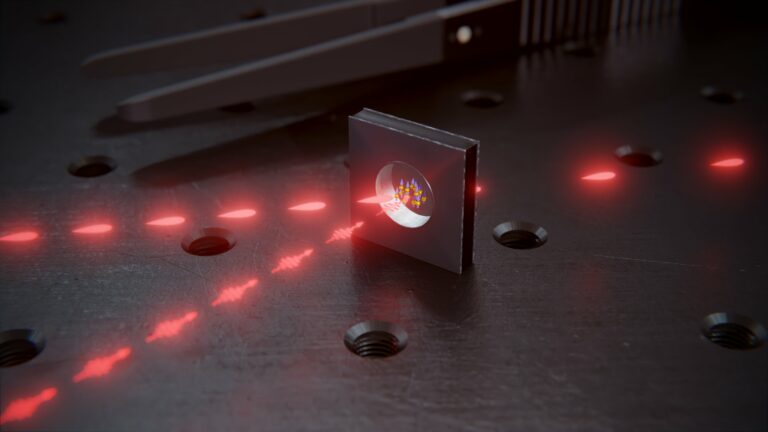Development of Mass-Producible Miniature Quantum Memory Component by Scientists
The University of Basel has successfully constructed a quantum memory component utilizing atoms within a small glass cell. This breakthrough paves the way for the future production of quantum memories on a larger scale. These memories will play a crucial role in the development of quantum technologies, allowing for secure message transmission through quantum cryptography and the interconnection of quantum computers. The team, led by Professor Philipp Treutlein, has achieved this milestone by creating a micro-fabricated memory element that is highly suitable for mass production. The details of their achievement have been documented in the esteemed journal, Physical Review Letters.
Photon storage in glass cells
Light particles are highly suitable for the transmission of quantum information. Quantum information can be sent through fiber optic cables, satellites, or stored in a quantum memory element using photons. The precise storage of the quantum mechanical state of photons is crucial, and eventually, they need to be converted back into photons after a certain period.In a previous study, Basel researchers successfully demonstrated this using rubidium atoms in a handmade glass cell that was several centimeters in size. However, for practical everyday use, smaller cells that can be produced in large quantities are required.
Now, Treutlein and his colleagues have achieved exactly that. They have managed to use a much smaller cell, measuring only a few millimeters, which they obtained from the mass production of atomic clocks. To overcome the challenge of having enough rubidium atoms for quantum storage in such a small cell, they had to heat it up to 100° centigrade to increase the vapor pressure.Additionally, they exposed the atoms to a magnetic field of 1 tesla, which is more than 10,000 times stronger than Earth’s magnetic field. This manipulation of the atomic energy levels facilitated the quantum storage of photons using an additional laser beam. With this method, the researchers were able to store photons for approximately 100 nanoseconds. In that time, free photons would have traveled a distance of 30 meters.
A 1,000 quantum memories on a single wafer
Treutlein states that a groundbreaking achievement has been made in creating a miniature quantum memory for photons. This remarkable feat allows for the production of approximately 1,000 copies simultaneously on a single wafer. The storage of photons was successfully demonstrated in the current experiment using highly attenuated laser pulses. However, Treutlein, in partnership with the CSEM in Neuchatel, aims to further advance this technology by storing individual photons in the miniature cells. Additionally, efforts are being made to optimize the design of the glass cells to maximize the storage duration of the photons while maintaining their quantum states.
This article is republished from PhysORG under a Creative Commons license. Read the original article.
Do not forget to share your opinion with us to provide you with the best posts !




0 Comments